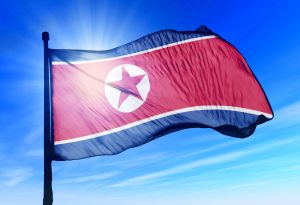South Korea’s Joint Chiefs of Staff (JCS) said on Sunday that North Korea appeared to have fired two artillery shots from multiple rocket launchers toward its west coast.
The two artillery shots were detected from around 6:21 p.m. to 6:37 p.m., JCS said.
In the published announcement, JCS said that “South Korea and the U.S. are working closely and maintaining a thorough readiness posture” while strengthening the military’s surveillance and vigilance.
North Korea previously fired five shots from multiple rocket launchers toward its west coast from around 8:07 a.m. to 11:03 a.m. on June 12. At that time, the JCS made the same announcement it published this time but was accused of failing to detect the shots as the announcement came about 10 hours after the launch of the last artillery.
The JCS has normally not publicly announced North Korea’s firing of conventional artillery shots, which fly a short range with a low apogee. Since June, however, the JCS has announced the North’s missile launches regardless of the type.
Seoul and Washington have not made any statement or remark about the North’s artillery launches yet. As the artillery shots appeared to be a casual military drill, Pyongyang is unlikely to make specific statements about them.
North Korea’s artillery shots are not violations of the U.N. Security Council resolutions, but its nuclear and ballistic missile tests and development are banned. The UNSC members, except China and Russia, have criticized Pyongyang when it violated the resolutions and urged the imposition of new sanctions to deter the development and testing of its ballistic missile programs in the past months. However, with China and Russia wielding UNSC vetoes as permanent members, Seoul and Washington are apparently preparing to impose their own sanctions on the individuals and companies supporting the North’s missile development. However, it is questionable whether those sanctions could work.
With explicit signs that North Korea is preparing for its seventh nuclear test – including Supreme Leader Kim Jong Un’s stated ambition to develop his nuclear programs further – Seoul and Washington have reinvigorated their combined drills since South Korean President Yoon Suk Yeol took office in May. As an example, six U.S. F-35A fighter jets arrived in South Korea on July 5, to take part in joint military drills that are expected to end on July 14. It was the first public deployment of the United States’ most advanced fighter to the Korean Peninsula since December 2017, when Seoul and Washington responded to the North’s sixth nuclear test.
Given the capabilities of the F-35 fighter jet, which can evade the North’s radars, North Korea’s state-controlled media has denounced the deployment of the U.S. military assets, especially the F-35 fighter jet, in the region. North Korean media warned Seoul’s military officials that they do not know when and how the fuse of war will be lit by their behavior. In this context, some say that the North’s two artillery shots late Sunday evening – which is an unusual time for a North Korean missile launch – were a response to the South Korea-U.S. combined drills.
However, considering the unprecedented spate of North Korea’s missile tests, including its intercontinental ballistic missile (ICBM), this year, more advanced and powerful missile programs should have been launched if Pyongyang truly meant to send messages to Seoul and Washington over their exercises with F-35 fighter jets.
Also, North Korea will be conducting summer military drills this month, so more options were on Kim Jong Un’s table. Considering Pyongyang’s attempts to directly confront Washington in the power game in the region, the relatively minor artillery shots should not be seen as a response to the South Korea-U.S. combined drills.
It is safe to say that the artillery shots are just a part of North Korea’s summer military training. However, if we are looking for a triggering event, rather than the U.S. F-35 fighter jets, there was something else North Korea may have been watching.
Pyongyang’s artillery shots on Sunday came hours after the new U.S. ambassador to South Korea, Philip Goldberg, arrived in Seoul. U.S. President Joe Biden’s belated appointment of Goldberg as the ambassador – it took 18 months to fill the vacancy – gave the impression to the South Korean public that the denuclearization of the Korean Peninsula is not a policy priority for Washington. Also, as Goldberg was the main coordinator who was involved in the implementation of U.N. sanctions on North Korea under the Obama administration, his appointment is seen by many as confirmation that the Biden administration’s policy on North Korea is an updated version of the Obama administration’s “strategic patience” approach.
Given this context, if there was a hidden message in the unusually late time for the artillery shots, Goldberg’s arrival, not the U.S. F-35 fighter jets, could have been the object. Pyongyang may want to send the new U.S. ambassador a message, given his firm stance on imposing sanctions on North Korea.

































